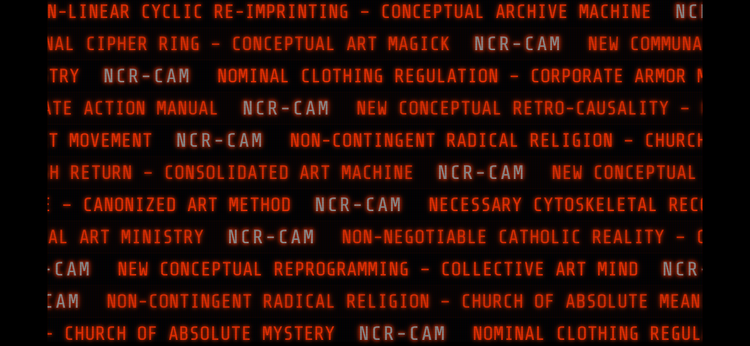The Misunderstood Revolution of Cryptocurrency

Cryptocurrency has often been described as the financial revolution of the 21st century—a transformative force promising to decentralize value, empower individuals, and bypass traditional systems of wealth and power. Bitcoin, Ethereum, and the myriad tokens that followed have become synonymous with the ideals of transparency, autonomy, and innovation. Yet, the revolutionary narrative surrounding cryptocurrency is built on several flawed assumptions. At its core, the crypto movement often misinterprets the nature of value, its distribution, and the real needs of global financial systems.
Theory 1: Value Is Already Decentralized Enough
The first misunderstanding lies in the belief that value is inherently centralized under traditional financial systems. Crypto proponents argue that wealth is locked away in silos—dominated by fiat currencies, controlled by banks, and restricted by regulators. In reality, value is already decentralized in diverse and meaningful ways.
Wealth in modern economies rarely takes the form of cash or centralized reserves. Instead, it exists in fragmented and dynamic forms: real estate, equities, intellectual property, commodities, and legal agreements. These assets flow through networks of financial markets, legal systems, and payment channels that, while imperfect, distribute value across countless stakeholders.
The idea that cryptocurrency will “free” value ignores this existing decentralization. Traditional systems already allow for the movement and utilization of wealth across borders, industries, and institutions. From fractionalized ownership of stocks to global credit markets, the financial system has evolved to create a robust, if imperfect, framework for decentralized value.
Theory 2: The Value Layer and Transaction Layer Are Independent
Cryptocurrencies often conflate the value layer and the transaction layer into a single entity. Bitcoin, for example, serves simultaneously as a means of exchange and a store of value. This conflation introduces inefficiencies and complexities that traditional systems avoid.
Historically, value has existed independently of the methods used to transact it. A farmer’s land, a company’s intellectual property, or a government bond derives its worth from trust, utility, and scarcity. The systems that facilitate transactions—whether barter, banking, or digital networks—are tools to transfer that value efficiently. They do not define the value itself.
Crypto systems that claim to “track” real-world value through blockchain-based representations often misunderstand the limitations of connecting the digital and physical worlds. Attaching a digital token to a physical asset, such as property or goods, does not inherently make the system more secure or trustworthy. The physical asset can be destroyed, altered, or stolen, while the digital record remains unchanged—or worse, is manipulated to sever its connection to reality. In this way, these systems create new vulnerabilities rather than addressing old ones.
By attempting to merge these layers, cryptocurrencies create risks that traditional systems mitigate through separate, specialized frameworks. Traditional systems have evolved to ensure that records, transactions, and the physical realities they represent are legally and operationally aligned. Crypto, in its pursuit of “trustless” efficiency, often overlooks this crucial alignment.
Theory 3: Decentralization Is Not Always Better
The ideological framing of decentralization as inherently superior ignores the benefits of centralized systems. Centralization is often criticized for creating bottlenecks or vulnerabilities, but it also provides stability, accountability, and efficiency.
Decentralized systems, including most cryptocurrencies, are not immune to failure. They introduce their own challenges—technical inefficiencies, security vulnerabilities, and a lack of clear governance. For instance, while crypto promises transparency, the pseudonymity of blockchain transactions can obscure bad actors and enable fraud. Meanwhile, centralized financial systems operate under layers of regulation, oversight, and legal recourse that create trust and stability.
This is not to say decentralization lacks merit. There are cases where decentralized systems can improve access, innovation, and autonomy. But the wholesale rejection of centralization overlooks the practical reasons it has endured across centuries of financial evolution. Decentralization must be applied thoughtfully, where its advantages outweigh its costs.
Theory 4: Humanity Adapts Its Tools for Value Exchange
The passage of time has shown that humanity is adept at finding efficient ways to exchange value. From barter systems to fiat currencies to digital payments, tools for transacting value evolve pragmatically to meet the needs of their users. Cryptocurrencies, in contrast, often feel like a solution in search of a problem.
A blockchain ledger cannot solve the practical challenges of physical value exchange simply by tokenizing it. A house remains valuable whether its ownership is transferred via a deed, a legal contract, or a blockchain token. What matters is the trustworthiness, enforceability, and adaptability of the system facilitating that transfer. Cryptocurrencies fail when their ideology of decentralization conflicts with the practical realities of linking digital records to physical goods.
For example, a digital token representing a piece of land may be recorded immutably on a blockchain. But this does not protect the land from fraud, dispute, or physical damage. A malicious actor could falsify the link between the physical asset and its digital record—or simply exploit the gap between the two to create chaos. By comparison, traditional systems of property law and contracts have centuries of refinement to handle these complexities.
Theory 5: The Transience of Financial Systems
No financial system lasts forever, and neither will cryptocurrencies in their current form. The rails for value exchange—whether traditional or blockchain-based—are transient, continuously evolving to better serve the underlying flow of value. The value itself, however, endures.
This insight is critical for understanding the role of cryptocurrency. Bitcoin’s resilience as a store of value may explain its relative success compared to other tokens, but even it is subject to change. The hype surrounding cryptocurrency often obscures this transience, luring people into speculative behavior rather than encouraging them to seek long-term value.
As financial systems evolve, humanity adapts the tools of exchange to meet emerging needs. Crypto’s place in this evolution will depend on whether it can solve practical challenges that traditional systems fail to address, rather than clinging to ideological purity.
Conclusion: Follow the Value, Not the Hype
Cryptocurrency, for all its technological innovation, remains an experiment in humanity’s long tradition of value exchange. While there are valid use cases for blockchain technology and decentralized systems, they must address real, organic problems rather than relying on ideological appeals.
The financial revolution crypto promises may come, but it will require an honest reckoning with the limitations of its systems—especially when linking digital representations to physical realities. The systems themselves are transient, but the value they move is enduring.
For those engaging with crypto, the lesson is clear: follow the value, not the hype. Only by staying grounded in what truly matters—trust, functionality, and adaptability—can humanity continue to innovate while preserving the stability and trust that value exchange requires. Cryptocurrencies are not the revolution themselves but one chapter in the ongoing story of how people move and share what they value most.






Member discussion